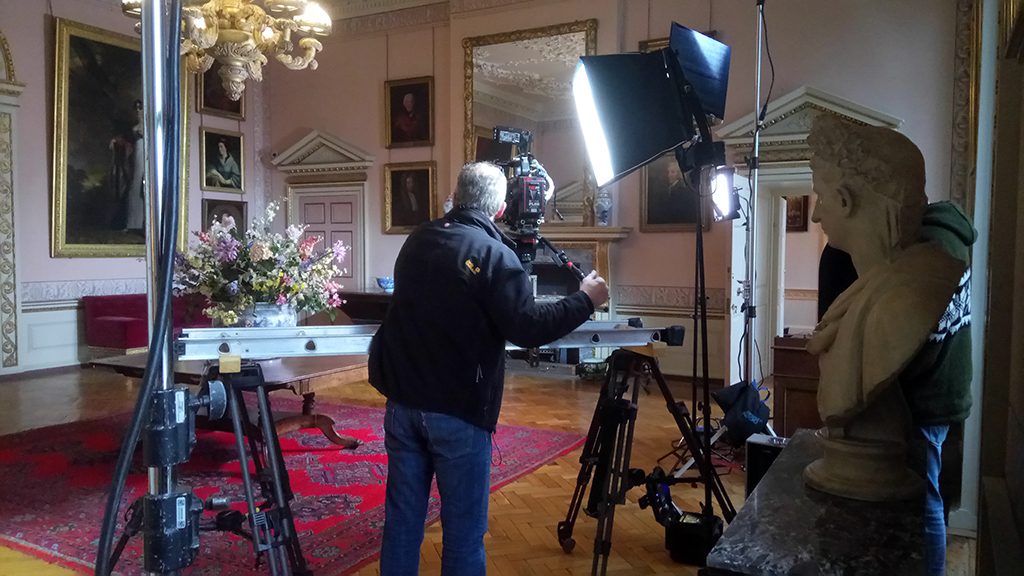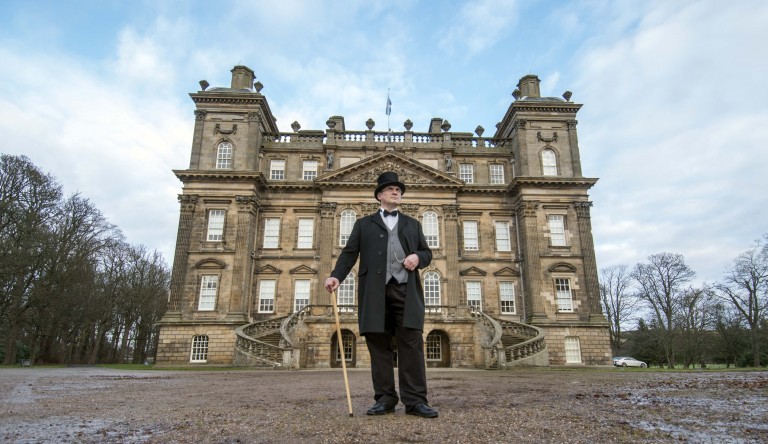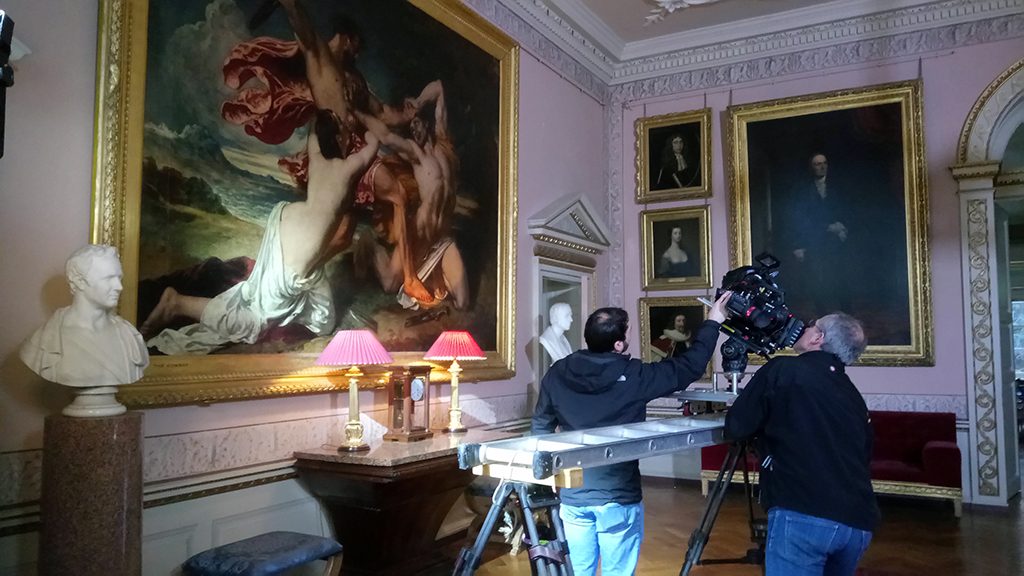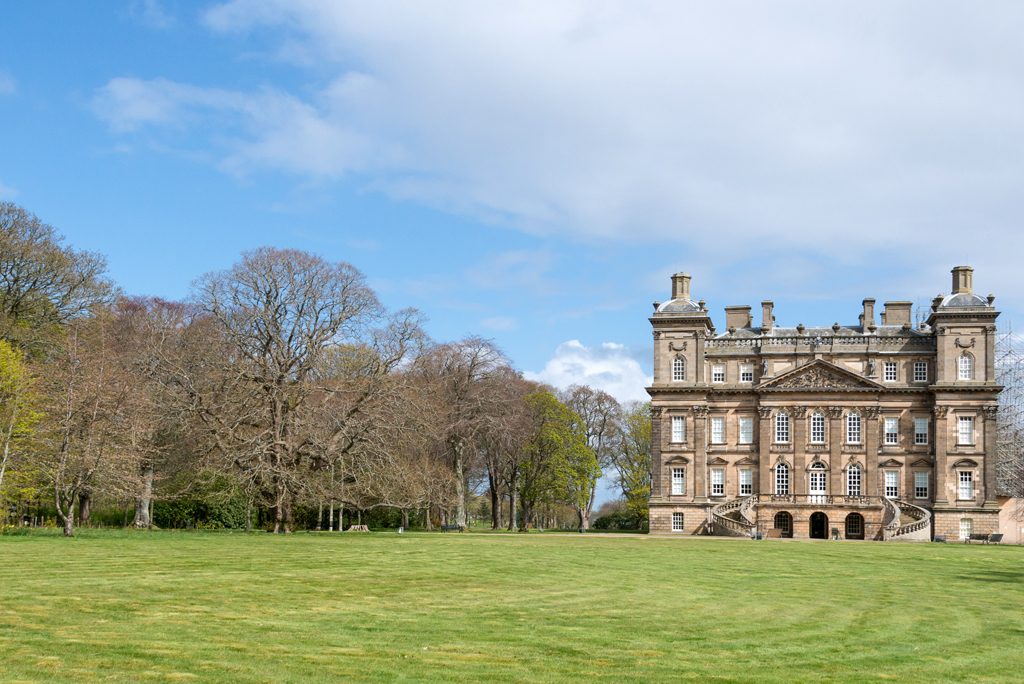Earlier in the year we were at Duff House, our handsome Georgian mansion in Banff, on a special quest.
Our mission: to create a new film introducing the history and architecture of Duff House, the people who lived there, and the magnificent collections of artwork, furniture and other objects on display. The film will be shown to visitors as they arrive, giving them a taster of the house’s stories.

A bust of Augustus Caesar looks on as director of photography Richard Cook films the Vestibule
Duff Stuff
With Duff House, the challenge is not what stories to include but what to leave out. The house itself is a visual feast, both inside and out. It is also home to extraordinary collections, loaned by individuals and bodies including the National Galleries of Scotland.
There are also many stories about the people who lived, worked or paid visits at the house.
People of Duff House
William Adam, the greatest architect of his day, designed the building but fell out with his client, William Duff – a wealthy man with a keen eye for an overspent budget.
Duff’s son, the 2nd Earl Fife, became the first family member to live in the house, but his wife Lady Dorothea did not settle there for long. After attempting to shoot him in his own library she took off and moved to Leith.
The 6th Earl welcomed the Prince of Wales as a visitor in 1883, to the delight of the local press. Five years later, he married the prince’s daughter, becoming in the process the 1st Duke of Fife.

Re-enactor playing the Duke of Fife
Later in its life, the house changed hands repeatedly, becoming an upmarket hotel, a barracks and a prisoner of war camp. For a few years it was Dr Edmund Spriggs’ sanatorium for the treatment of ‘diseases and derangements of the stomach and intestines’.
By the 1950s the house was largely abandoned, and it was not until 1995 that it re-opened in its present form. An introductory film was made then, with Kirsty Wark as presenter, and a horse as her co-star. According to time-served monument manager John Mair, their off-screen relationship was less than cordial.
Now, 22 years later, that film is to be replaced.
Duff House on the Silver Screen
Over two days, Collections Manager Sarah Connolly, art handler Paweł Pronobis, John and I – together with the house’s other manager Graeme Curran – watched as the crew went about their business. Very occasionally we provided help or advice, moving a priceless piece of furniture, clarifying a script point, or just carrying a cable.

Camera assistant Mark Biedul at work with director of photography Richard Cook in the Vestibule
Film-making can be slow. Each shot can take an hour or more to set up and light, yielding only a few seconds of footage. But the process was fascinating, and the shots we witnessed on the monitors looked terrific.
A third day of filming was scheduled, including exterior and drone photography. Unfortunately, the Aberdeenshire weather had other plans. We’ll be back at Duff House in February, hoping for some early-spring sunshine.
The film is due for completion in late March and we’ll tell you more about it then.
In the meantime, find out how to visit Duff House on our website.

